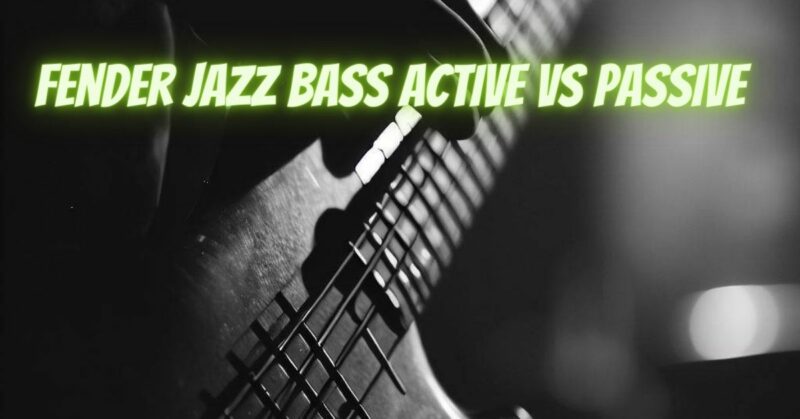The Fender Jazz Bass is an iconic instrument that has left an indelible mark on the world of music. Aspiring bassists often face a choice between the active and passive versions of the Fender Jazz Bass, both of which offer distinct tonal characteristics and playing experiences. In this article, we’ll take a close look at the differences between the Fender Jazz Bass Active and Passive models, helping you make an informed decision based on your musical preferences and playing style.
1. Classic vs. Contemporary: Overview of the Fender Jazz Bass Models
- Fender Jazz Bass Passive: The classic Fender Jazz Bass design features passive pickups and electronics. This model is celebrated for its warm, vintage-inspired tones and its place in the history of bass guitar.
- Fender Jazz Bass Active: The active version of the Fender Jazz Bass introduces modern electronics, including active pickups and onboard preamps. This model offers enhanced tonal shaping and a broader range of sonic possibilities.
2. Tonewood and Construction
Both the Fender Jazz Bass Active and Passive models share the same foundation when it comes to tonewood and construction. They typically feature an alder or ash body, a maple neck, and a rosewood or maple fingerboard. The design elements that define the Fender Jazz Bass are consistent across both versions.
3. Tonal Characteristics
- Fender Jazz Bass Passive: The passive version of the Jazz Bass is known for its rich, vintage-inspired tones. The passive pickups produce a warm and round sound that’s well-suited for genres like rock, blues, and funk. The passive electronics offer simplicity and a classic vibe.
- Fender Jazz Bass Active: The active version of the Jazz Bass offers a more modern and versatile tonal palette. The active electronics provide options for boosting or cutting bass, midrange, and treble frequencies, allowing players to sculpt their sound. This model is suitable for a wide range of genres and offers a brighter and more present tonal profile.
4. Tonal Shaping and Versatility
- Fender Jazz Bass Passive: The passive model offers a fixed tonal character with minimal adjustments. It’s ideal for players who appreciate the simplicity and warmth of vintage-inspired tones.
- Fender Jazz Bass Active: The active model offers extensive tonal shaping capabilities through its onboard preamp and EQ controls. This versatility appeals to players who want to explore various sounds and adapt to different musical contexts.
5. Playing Style and Genre Preference
- Fender Jazz Bass Passive: If you’re drawn to classic rock, blues, or vintage styles, the passive version might align more with your musical preferences.
- Fender Jazz Bass Active: If you’re a versatile player who enjoys exploring different genres and styles, the active version offers the flexibility to adapt your sound to various musical situations.
Choosing between the Fender Jazz Bass Active and Passive models depends on your personal taste, playing style, and musical aspirations. The passive version offers timeless, warm tones that are perfect for traditional genres, while the active model provides modern versatility and tonal shaping options. Ultimately, both models carry the legacy of the Fender Jazz Bass lineage, offering you a platform to express your musical creativity and leave your unique mark on the world of bass playing.


